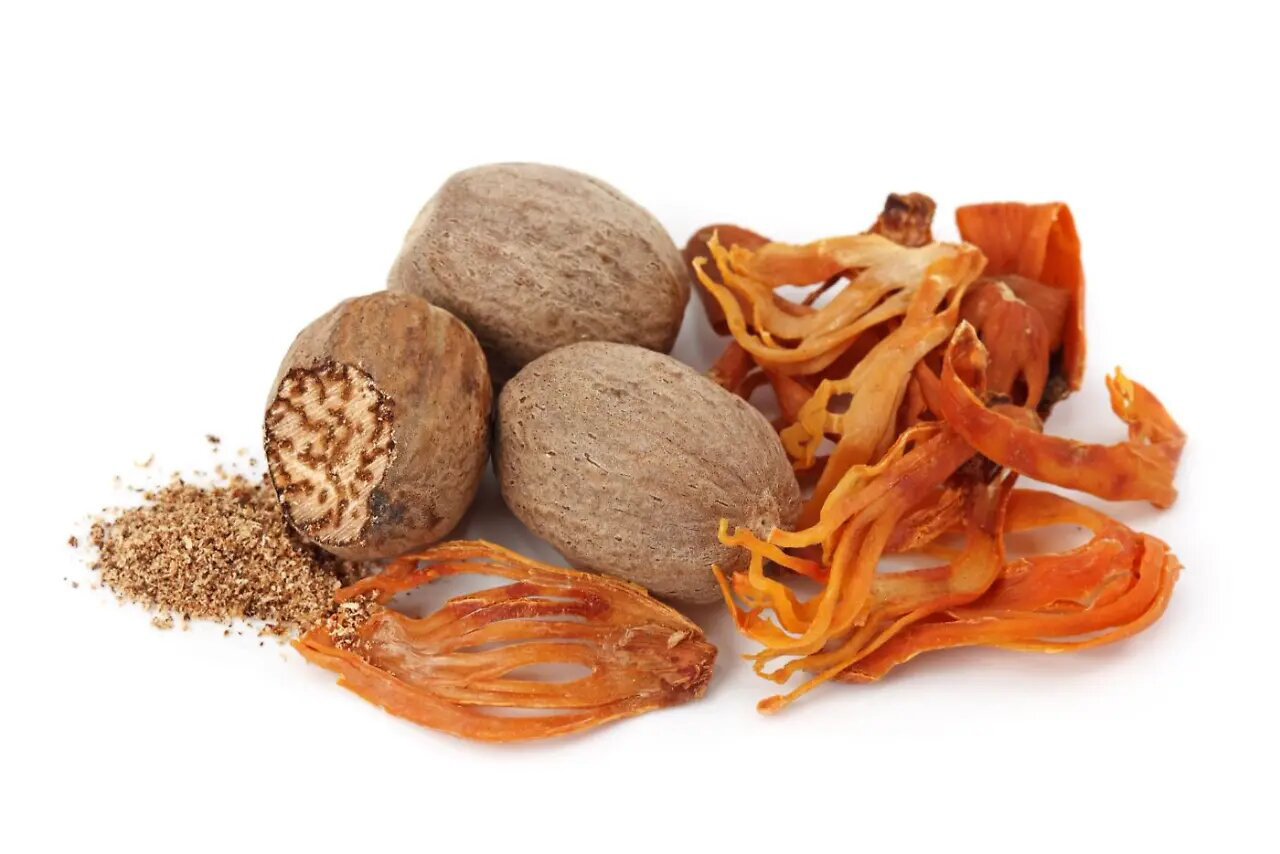Nutmeg and mace are two distinct but closely related spices that come from the same tree, Myristica fragrans. Native to the Banda Islands in Indonesia, these spices are derived from the seed and the aril (the fleshy part surrounding the seed) of the nutmeg fruit. Nutmeg is the seed itself, while mace is the reddish, lacy covering that surrounds the seed. Both spices have a warm, aromatic flavor, but nutmeg is more commonly used in ground form, while mace is usually available as a whole, dried aril or ground into powder.
Nutmeg has a sweet, spicy flavor with hints of clove and cinnamon, making it a popular addition to both sweet and savory dishes. It is commonly used in baking, in beverages like eggnog and mulled wine, and in spice blends such as pumpkin pie spice. Nutmeg is also valued for its medicinal properties and is traditionally used to improve digestion, relieve pain, and reduce inflammation. Mace, while similar in flavor, has a slightly more delicate, floral note. It is often used in lighter dishes, sauces, and baked goods, as well as in the production of certain liqueurs and perfumes. Both nutmeg and mace contain compounds like myristicin, which are believed to offer antimicrobial, antioxidant, and anti-inflammatory benefits. However, they should be used in moderation, as large quantities can be toxic. These two spices are prized for their ability to elevate both flavor and wellness in culinary traditions worldwide.
